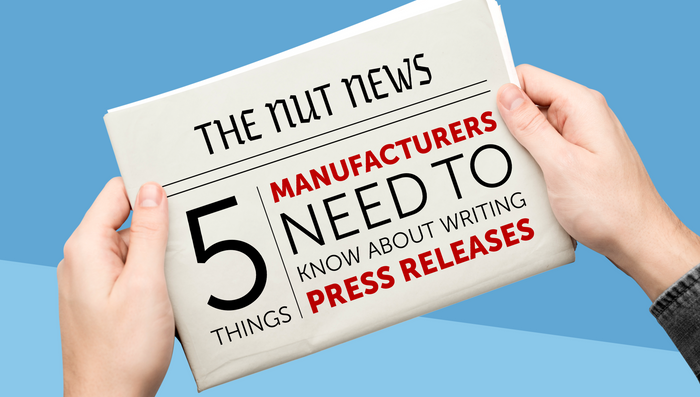PR
Newsjacking: how to make your brand the story
Newsjacking is one of the more high-risk high-reward marketing strategies. It’s been around for a while now. David Meerman Scott coined the term in 2011, defining it as ‘the art and science of injecting your ideas into a breaking news story so you and your ideas get noticed’.
A phenomenon of that age is very old in internet terms. The fact that it still happens is a testament to its power.
When it’s good, it’s brilliant. When it’s bad, it’s horrific. Sometimes it’s pointless, which is pretty demoralising for a marketing team, and you look very silly. That's if anyone notices in the first place.
We’re taking a look at the good, the bad, and the pointless, and drawing some lessons in reactive PR.
The Good
What is a good result? Attention. Obvious enough.
Generally, it’s positive attention, but depending on your brand, a mixed reception could serve you too. Some brands specialise in controversy, and it’s a potent force when the people you annoy aren’t your target market.
What’s most important is that it strengthens your brand. You’re communicating something about yourself by commenting on something else. It’s no good getting a ton of engagement with a viciously satirical political take, if you’ve built a brand on quaint cosiness. Unless you’re rebranding suddenly and fundamentally, in which case that would be a brilliant way to do it.
Let’s reverse-engineer some successful newsjacks, with three points in mind: Relevance, timing, and courage.
Relevance
The choice of story is the foundation, and it’s extremely difficult to get right. Because newsjacking is reactive, it’s a waiting game for the right story. But it probably won’t be served up on a silver platter. You have to find a creative link from the news to your brand.
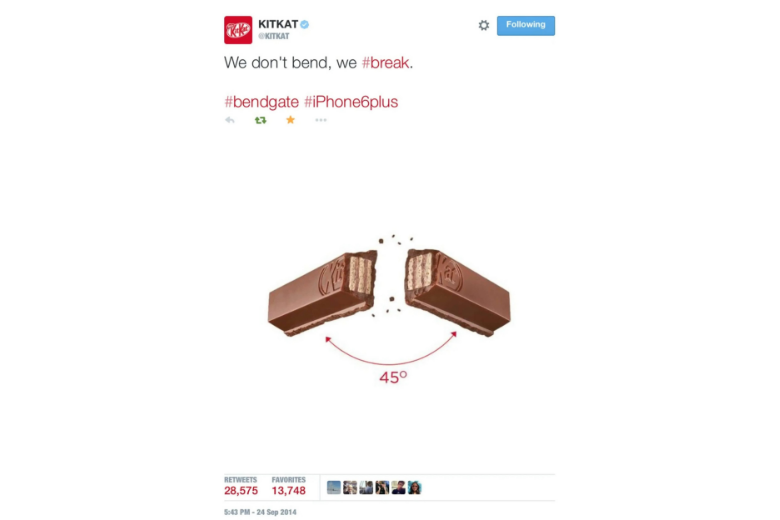
People with early iPhone 6 models reported that the handsets were said to be bending in their pockets. KitKat’s tagline is ‘Have a break’. Bend. Break. Bingo. Twenty six thousand retweets.
It looks easy when you see it working.
Timing
Meerman Scott places the ideal newsjacking point here:
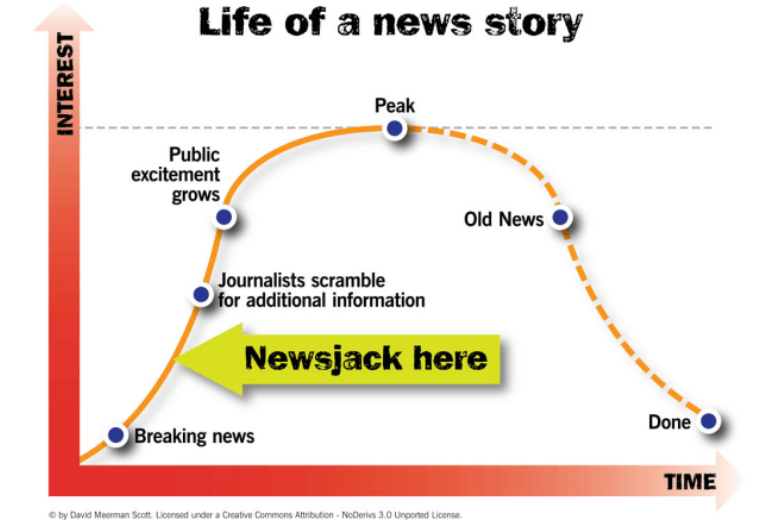
For maximum impact, you want your post to get out there when the story is taking off and still gaining momentum. You won’t just be commenting on the story, you’ll be part of it.
When something truly viral is happening, you can guarantee that lots of brands are going to jump on it. It’s good to do it first, of course. You don’t want to be drowned out. At the same time, if you’re not first, doing it best will differentiate you.
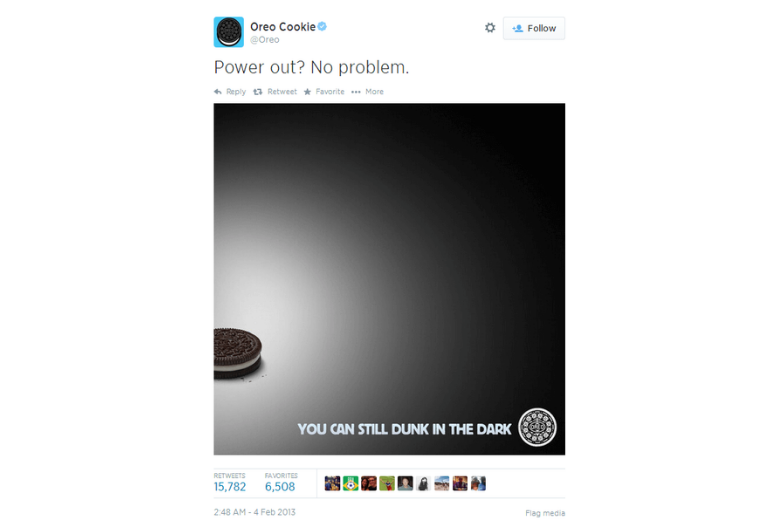
That was Oreo’s tweet in response to the power cut at the 2013 Superbowl. The power cut lasted 45 minutes. Once it was fixed, sending a tweet like that would be basically pointless.
Also, it speaks to the power of timing, because the link is tenuous at best. It doesn’t score relevance points. People know enough about the process of social media marketing that the turnaround time was impressive. Context beats content here.
One very important thing to remember was that Oreo had an advertising slot for the Superbowl already. They already had a social media team assembled, ready to respond to the event and the social chatter from their ad. Crucially, they had people with them who had sign-off on any posts.
Responding to news ‘in the wild’ will never be as slick as that, but it illustrates the power of a timely contribution.
Courage
In order to get an impactful tweet out at the right time, you need to be willing to press send. You need to put a lot of thought into it, but not overthink it. That’s easier said than done.
Yes, you can ask your boss and her boss and their boss to sign it off first, but how long will that take? As a brand, if newsjacking is something that you want in your PR and marketing strategy, you need to give responsibility to someone you trust and let them make the call at the right time.
Knowing also that what you do might backfire, you need to do it anyway. Common sense will protect you from egregious blunders (more on those very shortly), but you simply can’t predict every reaction and consequence.
Hold your nerve and commit, or you’ll produce half-baked material that doesn’t do much for anyone. There’s be more on that later, too.
The Bad
Nobody wants to have to tweet, ‘We’re deeply sorry we used the anniversary of a national tragedy to sell you banana bread’. Please don’t be so desperate to go viral that you do something you’ll regret.
Taste is subjective, and people draw the line in different places, but there are some ideas you should know are bad.
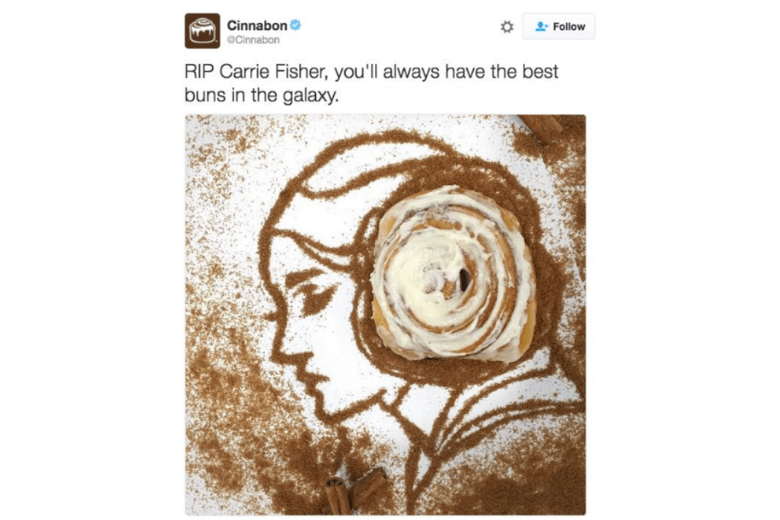
It could be quite a simple matter of choosing your stories carefully. Death and tragedy are best avoided.
The news is overwhelmingly negative because media thrives on that. Nervously waiting for your perfect newsjacking moment, you could become overzealous and jump on a story that can’t end well.
The internet is merciless and unforgiving
The internet doesn’t forget.
Your tweet has been screenshotted. It will live in infamy.
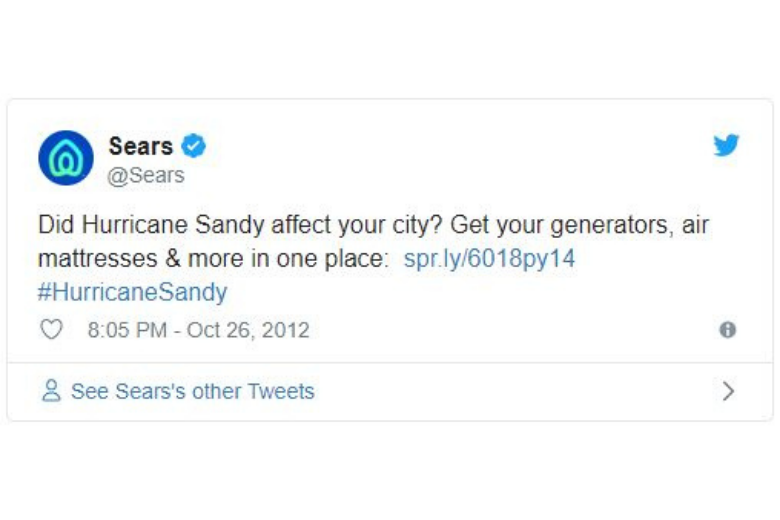
The Pointless
It was in very poor taste and a PR disaster, but at least Cinnabon’s Carrie Fisher tweet had some internal logic. Her most famous character was known for a hairstyle resembling cinnamon buns.
Even if it was negative, they got some attention. If you attempt to force your brand into a story that it doesn’t fit, you’ll probably get no engagement at all.
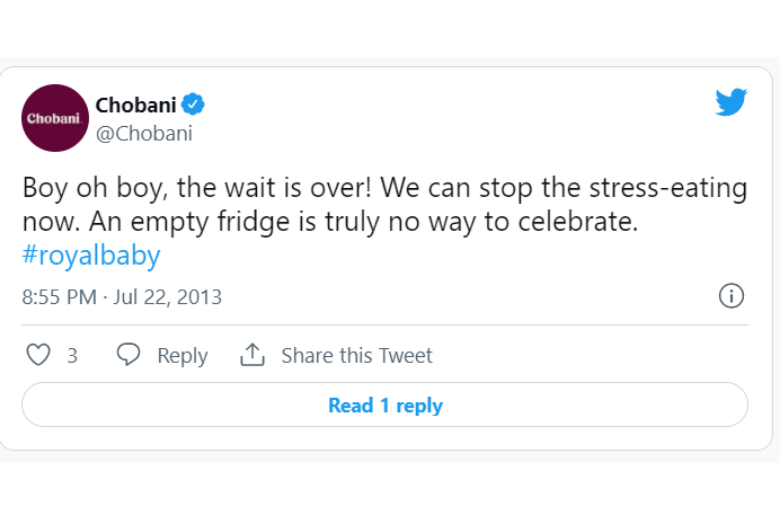
Via classy.org
Chobani is a US-based yoghurt company. It was a big stretch for it to newsjack the birth of Prince George, and that tweet didn’t even make much sense. It got ignored. It was a waste of time, and something like that risks muddying the water of your brand. A half-baked newsjack rubs against whatever curated marketing and branding you’ve invested in so far.
Tips
Newsjacking is a little like alchemy. You’re trying to make gold, you don’t know exactly what you need to do, and it could blow up in your face.
Here are some safety tips:
- Don’t newsjack for the sake of it. If the relevance of a news story to your brand is tenuous, you can do more harm than good
- When the time is right, seize the moment. Newsjack in a timely fashion, and make the message clear.
- Don’t newsjack tragedy
Share this:


